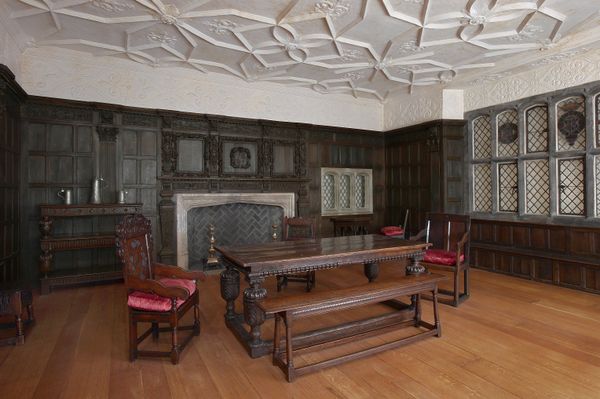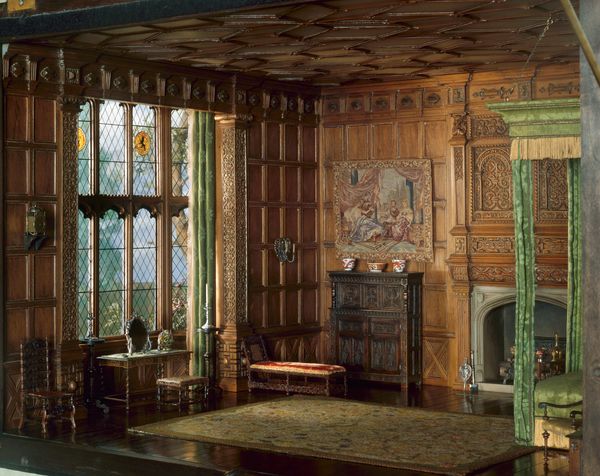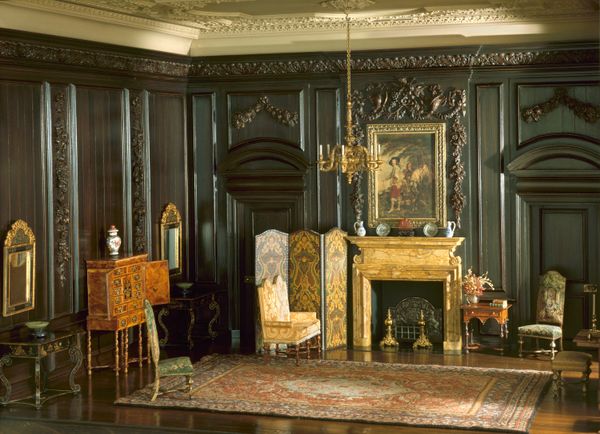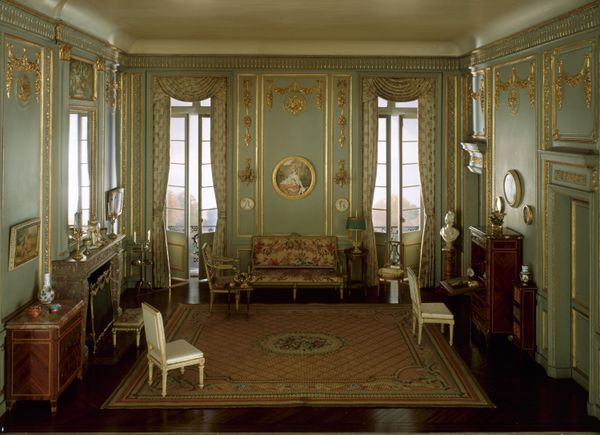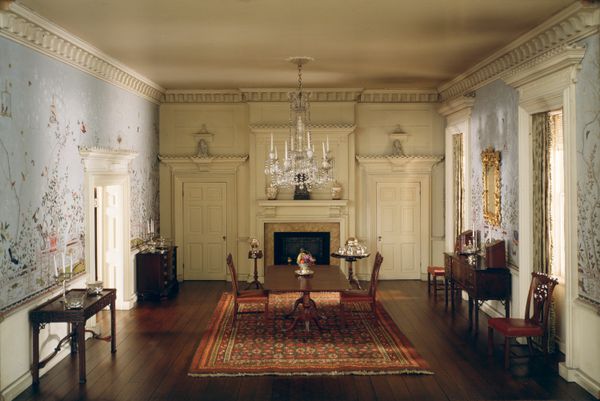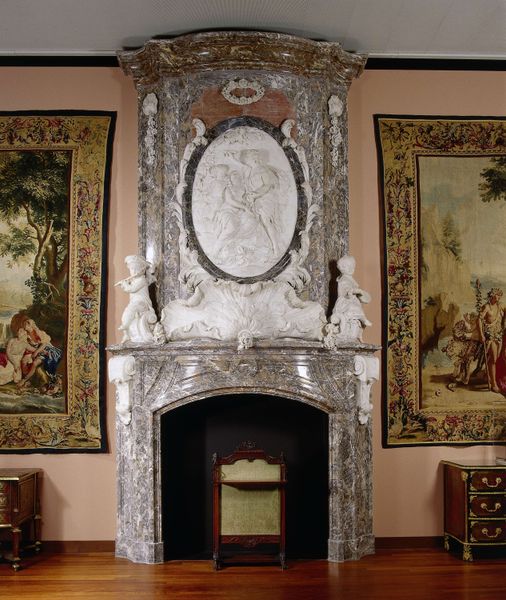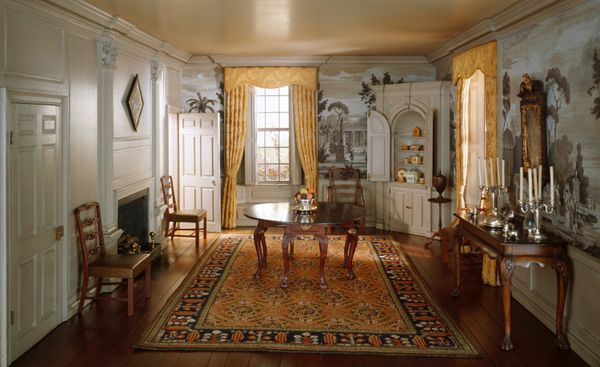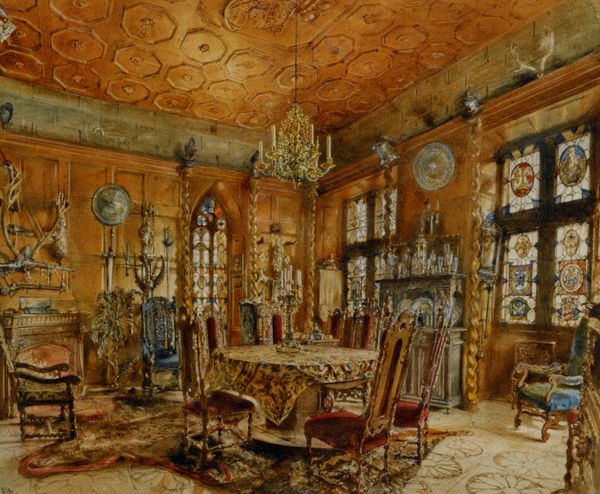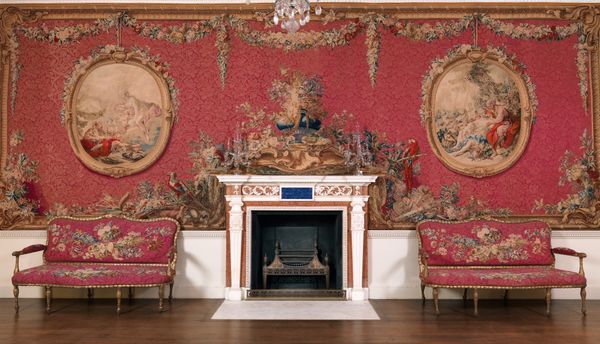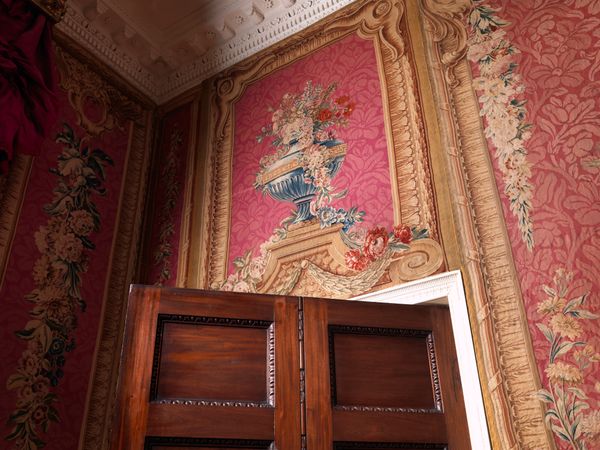
E-1: English Great Room of the Late Tudor Period, 1550-1603 c. 1937
carving, architecture
carving
historic architecture
11_renaissance
history-painting
architecture
Dimensions: Interior: 23 × 25 1/4 × 31 3/4 in. (57.5 × 63.125 × 79.375 cm) Scale: 1 inch = 1 foot
Copyright: Public Domain
Editor: Okay, next up we have Narcissa Niblack Thorne's "E-1: English Great Room of the Late Tudor Period, 1550-1603," created around 1937. It’s currently housed at The Art Institute of Chicago. This is not what I was expecting—It looks like a room inside a dollhouse! What captures your attention when you view this work? Curator: Indeed! These are Thorne Rooms, miniature period rooms meticulously crafted. What I find striking is the sense of contained grandeur, a tiny world reflecting a specific historical moment. The artist offers an entire scene rather than isolating and zooming in on any particular object. This piece echoes Renaissance Humanism – it invites the observer to step in and reflect upon our collective historical narrative. Editor: So, this piece offers an historical reflection through its extreme detail? Curator: Exactly! Examine the ceiling's carving or the intricate woodworking. Every minute detail tells a story, reflecting not only the aesthetics of the era, but the values and skills, perhaps even the anxieties, of the people who occupied such a space. Imagine being surrounded by those ornately detailed finishes every day, as this room may have felt warm and safe. What are your impressions of the space it evokes? Editor: It definitely gives off a feeling of organized wealth. Almost frozen in time, like it's waiting for its inhabitants. Curator: Precisely. It’s this strange stillness, a world captured in amber. It's both a celebration of craftsmanship and, perhaps, a melancholic reminder of time's passage, isn't it? Editor: Absolutely. Seeing so much detail crammed into this tiny space made me stop and think about what gets lost when we try to compress entire historical eras into singular images or objects. It does feel celebratory, and the artist preserved something special.
Comments
No comments
Be the first to comment and join the conversation on the ultimate creative platform.
